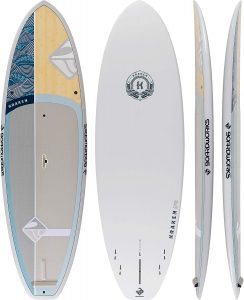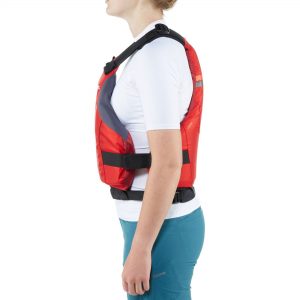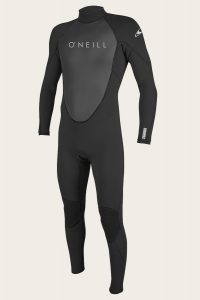Stand-up paddleboarding, commonly known as SUP, is a fantastic way to explore serene waters, improve your balance, and get a full-body workout while having fun. If you’re a beginner looking to embark on this exciting water sport, one of the most crucial decisions you’ll make is selecting the right SUP board. With a plethora of options available, the process might seem overwhelming. Don’t worry; we’re here to guide you through it step by step.
Understanding the Basics of SUP Boards
Before diving into the selection process, it’s essential to understand the basics of SUP boards:
- Types of SUP Boards: There are several types of SUP boards, including all-around, touring, and inflatable paddle boards. Each has its own unique features and best use cases.
- Board Length and Width: The dimensions of a SUP board greatly affect its stability, speed, and maneuverability. We’ll explore how to choose the right size for your needs.
Determine Your Paddling Environment
Your choice of SUP board should be influenced by where you plan to paddle:
- Flatwater vs. Surfing: If you’re primarily paddling on calm lakes or rivers, an all-around board might be your best bet. However, if you’re hitting the waves, you’ll want a board designed for surfing.
- Racing vs. Leisure: Some paddleboarders enjoy racing, while others prefer leisurely paddling. We’ll help you decide which category you fall into and which board suits your style.
Considering the Build Material
The material of your SUP board affects its weight, durability, and performance. You’ll learn about the pros and cons of the three primary construction materials: hardshell epoxy, soft-top, and inflatable.
Stability and Weight Capacity
Beginner paddleboarders often prioritize stability. We’ll discuss how board width and volume contribute to stability and weight capacity, ensuring you stay balanced and safe on the water.
Portability and Storage
For many beginners, portability is key. Now, we’ll explore the advantages of inflatable SUP boards, which are easy to transport and store.
Brand Reputation and Reviews
Researching different brands and reading customer reviews can provide valuable insights into the quality and performance of SUP boards. We’ll offer tips on how to identify reputable brands and make an informed decision. Some boards are just made better than others, and that is why it is helpful to read consumer reports like this Atoll paddleboard review.
Budget Considerations
Setting a budget is crucial when purchasing a SUP board. We’ll provide guidance on finding the best value for your money and explain what to expect in different price ranges.
Accessories and Extras
To complete your paddleboarding setup, you’ll need accessories like paddles, leashes, and fins. We’ll recommend the essentials and discuss optional extras that can enhance your experience.
Inflatables vs Solid Paddleboards for Beginners
Whether an inflatable or a solid (hardshell) paddleboard is better for a beginner depends on various factors, including your preferences, the type of paddling you intend to do, storage and transportation considerations, and budget. Let’s compare the two options to help you make an informed choice:
Inflatable Paddleboard:
- Stability: Inflatable SUPs typically offer excellent stability due to their wider design and greater volume. This makes them a great choice for beginners who want to build confidence and balance on the water.
- Portability: One of the most significant advantages of inflatable SUPs is their portability. They can be deflated and rolled up into a compact backpack, making them easy to transport and store. This is ideal if you have limited storage space or plan to travel with your board.
- Durability: Inflatables are surprisingly durable and can withstand accidental impacts with rocks or other objects in the water. They are less likely to get dinged or scratched compared to hardshell boards.
- Versatility: Inflatables are versatile and can be used in various water conditions, from calm lakes to mild surf. They are also suitable for yoga and fitness activities due to their soft and comfortable deck.
- Price: In general, inflatable SUPs are more budget-friendly than hardshell boards, making them an attractive option for beginners who want to try out the sport without a substantial financial commitment.
Solid (Hardshell) Paddleboard:
- Performance: Hardshell SUPs often provide better performance in terms of speed, tracking, and maneuverability. If you plan to get into racing or are interested in advanced paddling techniques, a hardboard might be preferable.
- Rigidity: Hardshell boards are stiffer than inflatables, which can result in a more responsive and dynamic feel on the water. This characteristic is appealing to some paddlers.
- Maintenance: Hardshell boards require less maintenance. You don’t need to inflate or deflate them, and there are no worries about potential air leaks or punctures.
- Weight: Solid paddleboards can be heavier than inflatable ones. This may affect ease of transportation, especially if you don’t have a roof rack or a large vehicle.
For most beginners, inflatable paddleboards are a fantastic choice. They offer a stable and forgiving platform to learn the ropes of stand-up paddleboarding. Their portability, durability, and affordability make them a practical option. However, if you’re specifically interested in high-performance paddling and don’t mind the extra weight and storage considerations, a solid paddleboard could be a suitable alternative.
Best Places to Learn How to Paddleboard
Learning how to paddleboard is an enjoyable and relatively straightforward process, and you can do it in various locations, depending on your preferences and access to water. Here are some of the best places to learn how to paddleboard:
Calm Lakes and Ponds: Beginner paddleboarders often start on calm, flatwater surfaces. Lakes and ponds are ideal for learning because they typically offer minimal currents and waves. Look for a serene location with easy access to the water and a gentle shoreline.
Slow-Moving Rivers: Many rivers have sections with slow-moving or meandering currents that are suitable for beginners. These areas allow you to practice balance and paddle techniques without the challenges of strong river currents.
SUP Schools and Rentals: Consider taking a lesson from a stand-up paddleboarding school or rental shop. These facilities often have experienced instructors who can teach you the basics, provide equipment, and ensure a safe learning environment. Beach towns and coastal areas often have SUP rental shops.
Ocean Bays and Inlets: If you’re near the coast, sheltered ocean bays and inlets can be excellent places to learn paddleboarding. These areas typically have calmer waters than the open ocean, making them more beginner-friendly.
Community Pools: Some community pools offer stand-up paddleboarding lessons or practice sessions. While not as expansive as natural water bodies, pools provide a controlled environment to work on balance and paddling techniques.
SUP Yoga Studios: If you’re interested in combining paddleboarding with yoga, look for SUP yoga studios near you. These studios often provide stable boards for yoga classes on calm water.
Paddleboard Tours: Joining a guided paddleboard tour can be a great way to learn while exploring scenic waterways. Tour operators often provide instruction as part of the experience, making it accessible for beginners.
Online Tutorials and Videos: While not a physical location, online tutorials and instructional videos can be valuable resources for learning the basics of paddleboarding. You can practice your skills on a calm body of water after watching and learning from these resources.
National and State Parks: Many national and state parks offer paddleboarding opportunities on their lakes and rivers. These locations often provide a beautiful natural setting for learning the sport.
Friends or Family with Experience: If you have friends or family members who are experienced paddleboarders, they can be great mentors. Learning from someone you trust can help you build confidence more quickly.
Remember to prioritize safety when learning how to paddleboard. Always wear a personal flotation device (PFD), start in calm waters, and take a lesson or practice with someone experienced if you’re new to the sport.
Conclusion:
Choosing the right beginner SUP board can make all the difference in your enjoyment of this exhilarating water sport. By understanding your needs, assessing your environment, and considering factors like board type, material, stability, and budget, you can confidently select the perfect board to kickstart your SUP adventure. Happy paddling!
Remember, the journey begins with the right board, so take your time, do your research, and get ready to embark on a thrilling paddleboarding journey!



